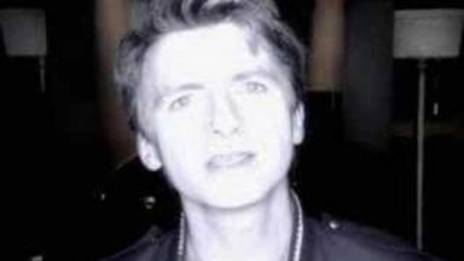AudioCulture
The noisy library of New Zealand music
Te pātaka korihi o ngā puoro o Aotearoa
Crowded House
His Australian comrades in the key first incarnation of the band, Nick Seymour and Paul Hester, added a chemistry that certainly aided their cause. Driving the group to the top was the killer combination of Neil Finn's consistently gorgeous melodies and a group persona that stressed spontaneity, humour and a genuine charm matched by few.
Initially given a cold shoulder by the Australasian music industry, Crowded House first broke through in the USA with their self-titled 1987 debut album. The single ‘Don't Dream It's Over’ peaked at No.2 there and along with the following single ‘Something So Strong’, the songs went on to register over a million plays on American radio.
Apparent record label bungling kept the band from sustaining their initial USA success, but that void was filled by the response of the UK and Europe to third and fourth albums Woodface (featuring important contributions from his brother, Tim Finn) and Together Alone. Crowded House ascended to arena headliner status there in that period.
Not many artists have the courage to call it quits while at their popular peak, but Neil Finn did just that by pulling the plug in 1996. Since reuniting a decade later, Crowded House have again produced credible work, while never quite emulating earlier triumphs. The strongest material from the group's first decade continues to receive regular international airplay.
A new beginning after the Enz
The legacy of Split Enz, New Zealand's most successful band, was a formidable one. Its end in 1984 would however mark the beginning of Neil Finn's triumphant ascent to the top of the global music summit, via Crowded House.
Clearly, the best days of Split Enz, commercially and creatively, were behind them in 1984. In a prophetic interview with Rip It Up early that year, Neil speculated that "I wonder if it would be good for me to do something else, to start something with my own stamp."
He soon got that chance. Tim quit Split Enz in June, and Neil followed shortly after. In a Rip It Up interview announcing he was disbanding Split Enz, Neil Finn noted that, "For a long time I'd been thinking about the fact I'd been in Split Enz since I was 19. I've never played in another band barring two gigs as After Hours. I guess I'd formed my own reasons for wanting to call it a day. We're still very ambitious, particularly me as far as another band goes. There'll be plenty more heard from us." Indeed.
Fertile seeds for their creation had been sown in the final phase of Split Enz.
His journey soon led to construction of a Crowded House. Fertile seeds for their creation had been sown in the final phase of Split Enz. Finn had developed a close musical and personal relationship with Paul Hester, and he'd already encountered Australian bassist Nick Seymour, the third key piece of the puzzle.
Nick came with a strong musical pedigree. Older brother Mark was leader of Hunters & Collectors, a hard-hitting Australian rock band having an international impact. Nick went to art school for five years, and his genuine talent for things visual would become a significant component in the success of Crowded House.
As fate would have it, Nick checked out Split Enz's final ever Melbourne show. He collared Neil Finn backstage, declaring himself the bassist Neil needed for any new group. Neil and Paul auditioned Seymour a week later. "We were impressed with his enthusiasm and his style of bass playing," Neil explained. "He was very much from a funk background, and I thought that'd be a good contrast. The tension created by different backgrounds can be really good."
Also in the early running for the Crowded House bass chair was New Zealander Bones (Dwayne) Hillman, of Suburban Reptiles and Swingers fame. He missed out to Seymour, but would later join another of Australia's biggest bands, Midnight Oil, on Neil Finn's recommendation.
Initially, Neil Finn's new band also included Sydney guitarist Craig Hooper (The Church, The Reels, Do-Re-Mi), but he did not fit in well, musically or personally, and soon exited.
Next step for the fledgling unit was the choice of a name. First up was The Mullanes, taken from Neil Finn's mother Mary's maiden name (and Neil's middle name). Thankfully, the uninspiring moniker would soon be dropped.
The new band recorded songs for a demo tape they hoped would score them that coveted international record deal. The tape was given a frigid reception by all the major Australian labels. Presumably, they turned red-faced as Crowded House grabbed international glory.
Neil Finn and Paul Hester personally pitched the demo tape to labels in London, New York, and Los Angeles.
Through early to mid-1985, Neil Finn and Paul Hester personally pitched the demo tape to labels in London and New York, before striking gold in Los Angeles. Tom Whalley at Capitol Records was impressed by the first Mullanes demo and he suggested they talk to his lawyer, Gary Stamler.
The Los Angeles-based entertainment lawyer Gary Stamler became a crucial player in the Crowded House saga. He had caught Split Enz's final show in Auckland a few months earlier, so he was already aware of Neil's talent. Through Whalley and former Split Enz tour manager turned The Mullanes manager Lars Sorenson, Stamler met Neil and Paul and listened to their tapes.
Finn and Hester were taken with Stamler. "I found out later Paul was all excited because I represented Ringo Starr, his idol," says Stamler. "Paul told me Neil was excited because I thought he was better than Tim."
Tom Whalley at Capitol encouraged them to do some more recording. A third demo tape included the song that would kick-start Crowded House's career, 'Don't Dream It's Over'.
To road test their new material, The Mullanes headed home, touring pubs down Australia's east coast in June 1985. Gary Stamler, who trekked down with Whalley to catch the gigs, recalls "We were really horrified at the lack of interest and vibe. The audiences were disinterested, and this gave Tom some pause."
Happily, Whalley trusted his instincts, signing the band to a recording contract with Capitol in June 1985. The deal only included Nick Seymour at the last minute, as Stamler recalls. "The original draft I have only listed Neil and Paul. They felt Nick would feel bad if he wasn't on there, so he only became an official part of the band on signing day."
Next step was choosing a producer. Enter Mitchell Froom, a young American keyboardist (Elvis Costello, BoDeans) beginning a production career. Froom was blown away by the Mullanes demo. In 1989, Froom reminisced to Rip It Up's Chris Bourke that "I heard a demo with Neil singing 'Don't Dream It's Over' with just guitar that just about every producer in town had turned down. I couldn't believe it."
Neil Finn later noted, "I was instinctively convinced Mitchell was the right guy. He had definite impressive ideas about the songs right from the start."
Pre-production and rehearsals in Los Angeles followed. Neil, Paul and Nick found themselves in a couple of crowded houses during this phase. The first was Stamler's Santa Monica townhouse, where they stayed in a room above the kitchen. This experience was later immortalised in Crowded House favourite 'World Where You Live', via the lyrics "high above the kitchen and we're strangers here."
Stamler officially became the Crowded House manager in July 1986, but the crowded house that spawned the band's new name was a place the trio rented in the Hollywood Hills while they recorded the first album.
Crowded House
Recording sessions at LA studio Sunset Sound Factory found the band and Froom working well together. Froom told me, "It's about sitting around and everybody throwing out ideas to see what works. It's about not having an ego about the music, but rather following whatever sounds the best."
Establishing a group identity in the sound was a challenge though. Froom later told Bourke the first album "was hell [to make]. We were trying to work out what the band should sound like. More electronic? Like Talking Heads? Pet Shop Boys? How to approach it?"
The gift for melody Neil Finn had shown early in Split Enz was back, bigger and better.
Thankfully, Crowded House sounds like none of that. The gift for melody Neil Finn had shown early in Split Enz was back, bigger and better, while Seymour, Hester, and Froom framed his songs and emotionally eloquent vocals with real empathy.
Upon its release in North America in July 1986, Crowded House notched positive reviews in such important publications as Newsweek, Billboard, Spin and Musician.
Commercially, the album got off to a sluggish chat, with the first track aimed at American radio, 'World Where You Live’, failing to catch on. Standard strategy would have been to try another up-tempo track, but Tom Whalley took a chance on a ballad.
That song was 'Don't Dream It's Over', destined to become one of the most popular songs ever by an Australasian act.
A crucial strategy in launching the album and the band was a promotional tour of key North American cities on which Crowded House would actually play for the media and retailers they were attempting to seduce. As Neil would later explain, "meeting press and record retailers, you just talk about what you do. The best way of communicating yourself is to play, and that's much more satisfying for us too." There was an important cost benefit too. "This is a way of introducing ourselves without roadies," said Neil.
A solo turn by Neil in Nashville at an international conference for Capitol, EMI and its affiliated labels in August 1986 was a big hit. "He had the whole place singing along, one of those magical moments," recalls Heinz Henn, then Director of International at EMI. This paved the way for a 25-city performance-spiked publicity tour of Europe at which Crowded House played record stores, TV and radio stations, even the label's canteen.
This approach worked its magic everywhere. In mid-October 1986, the band played a media and industry only showcase at a crowded private house in Orakei, Auckland. "What a night, what great music," raved Paul Ellis in the Auckland Star.
Next up was North America. Unconventional venues for their private parties and showcases included a seafood restaurant in Seattle, a Japanese garden in LA, and a British pub in Toronto. This scribe attended the latter, at The Duke of Gloucester, in November. It was a magical night that even jaded industry types recall with immense fondness now. No proper PA or even a stage here, just a corner with space for a stand-up drum kit and the three players. Neil Finn was fighting a cold, but he and his comrades were charming and genuinely funny, and the melodic strengths of their early songs dazzled.
The spontaneity of the Crowded House “busk 'n’ schmooze” approach won them important converts.
The novelty and spontaneity of the Crowded House “busk 'n’ schmooze” approach won them important converts at every stop, and was a crucial component of their ascent to the top.
Belatedly, the Crowded House album entered the Billboard Top 200 chart in 1987, as 'Don't Dream' inched its way upward. The single peaked at No.2 in the USA on April 25, kept out by the George Michael/Aretha Franklin duet 'I Knew You Were Waiting'. Momentum was maintained by appearances on the big TV talk shows (Joan Rivers was charmed by the lads) and non-stop touring.
I attended one of those gigs, at Toronto's Diamond Club, April 1, 1987. They instantly sold out the 1,000 capacity club and by this stage as performers, they were firing on all cylinders. Spontaneity was still the mandate, as when they invited loud Split Enz fan Paul Myers (brother of Wayne's World star Mike Myers) onstage to sing 'I Got You' with them.
The first Crowded House album also took a long time to catch on in Australasia. By Christmas 1986, it had only sold a paltry 3,000 copies in NZ, but the growing USA success of 'Don't Dream It's Over' had a spillover effect. The single eventually hit No.1 in NZ, while the album peaked at No.3, charted for 36 weeks, and reached triple-platinum sales (over 60,000 copies). Across the pond, 'Don't Dream It’s Over' and the album both reached No.8. Steady sales brought five times platinum status there.
Temple Of Low Men
By August 1987, Neil Finn was home in Melbourne, writing for album No.2. Mitchell Froom relished the opportunity to produce again. He once told me "the most interesting thing is to do a body of work with someone, but only as long as it's alive. After a first record, you often have great ideas for a second. There's also more trust, so that gets easier."
The basic tracks for Temple Of Low Men were laid down in just eight days in LA and Melbourne in early 1988, with the results mixed at the Hit Factory in New York by Bob Clearmountain. Guests fleshing out the trio sound included British guitar ace Richard Thompson (on 'Sister Madly'), the Heart Attack Horns, percussionist Alex Acuna, Froom on keyboards, and Tim Finn on some backing vocals.
Themes of temptation, jealousy, infidelity, revenge and insanity meant this wasn't an easy listening album, lyrically at least. Neil Finn's gift for gorgeous melodies remained intact, however, as showcased on such highlights as 'Into Temptation' and 'Better Be Home Soon.'
Temple Of Low Men was released in North America and Australia in July 1988, and in Britain a month later. Reviews were mixed. Rip It Up's Chris Bourke termed it "an album of remarkable depth and maturity, touching profound emotions with songs of originality and substance." In a vitriolic review, Melody Maker's John Wilde claimed, "Finn proves that pretension can be a terrible thing in the hands of stupid men."
Response to the first single, 'Better Be Home Soon', was also uneven. It peaked at No.2 on both the Australian and NZ charts, reached No.1 in Canada by October, but only achieved a disappointing No.42 in the USA.
‘temple of low men’ was not an easy listening album, lyrically at least
The often-snide condescension of the English music press to anything coming from the colonies (not just Crowded House) was encapsulated in a Melody Maker review of second single 'Sister Madly'. Dismissing the song as "Antipodean angst", critic David Stubbs sneered, "Crowded House are big in Canada, which sums it up really."
The band weren't about to spend excess energy on the UK market. Neil Finn told The Auckland Star – "having spent three years in England with Split Enz, I've had the approach that I'm not going to tear my hair out over England until they're ready to listen to us." That time would come.
Crowded House's first foray into Japan comprised a gruelling six-day promotional tour, punctuated by the screams of teenage girls.
August 1988 brought a sold-out Australian tour. A planned Auckland gig was postponed when Crowded House received an invite to appear on Late Night With David Letterman and to perform and present at the MTV Awards, two opportunities for USA exposure too good to turn down. The trip turned into a week-long North American promo tour.
At the MTV Awards in LA, Crowded House performed 'Better Be Home Soon' from their seats. Despite all this exposure, the band decided against playing a massive USA tour. This refusal has been termed as one reason for Temple Of Low Men underachieving in the USA, but Neil Finn placed the blame on his record label. Mitchell Froom concurred, noting, "I remember Bruce Springsteen called the President of Capitol and asked him what the hell was going on, why wasn't that record a hit."
“It feels like people who like us are really committed, or should be committed, as the case might be.”
– Neil Finn
Eventual USA sales of around 300,000 mean Temple can't be termed a complete flop. In 1991, Neil told Music Express "it didn't really have any singles on it in America, but it ended up selling a lot of records. It feels like people who like us are really committed, or should be committed, as the case might be."
New Zealand was next on the Crowded House calendar, with a January 1989 tour. Opening act Schnell Fenster featured three alumni of Split Enz, Phil Judd, Noel Crombie and Nigel Griggs. No surprise that some of the Crowded House encores turned into impromptu Split Enz reunions.
As for Split Enz, Canada remained a happier hunting ground for Crowded House than the US. In an extensive tour (March 9-31), they generally sold out theatres in the 1500 to 3000 capacity range. Richard Thompson opened the tour, regularly joining Crowded House to reprise his masterful guitar work on 'Sister Madly.' Also of note was the introduction into Crowded House of American keyboardist Mark Hart, destined later to play a significant role in the band.
The LA-based Hart was respected in that city's scene as a talented and versatile keyboardist and guitarist. He'd toured and recorded with Supertramp. Other credits included touring with Sam Phillips and recording with Aimee Mann and The Black Crowes. When regular Crowded House touring keyboardist Eddie Rayner couldn't make this tour, Gary Stamler recommended Hart.
I caught one of two sold-out shows in Toronto on that tour. The quality musicianship and spontaneous fun performance style was no surprise, but some audience response was. The cute and cuddly aspect of Crowded House's persona meant a large screaming-teen contingent, a mite off-putting to more mature fans. The group took it all in stride, of course, and the show ended with at least 20 fans onstage, singing and dancing along to 'Something So Strong.'
En route back to Australia, Crowded House played a memorable gig at LA's Pantages Theatre. There, Roger McGuinn, former leader of folk-rock pioneers The Byrds, joined them onstage for versions of three Byrds classics. The Temple Of Low Men chapter was now closed.
Crowded House reconvened in December for some Australian shows, culminating with a New Year's Eve concert in Sydney. Joining as headliners was a reunited Split Enz.
Woodface
The dawn of a new decade saw Neil Finn looking ahead to the creation of two new records, a third Crowded House album and a joint Neil and Tim Finn brothers record. The comparative commercial disappointment of Temple compared to the phenomenal success of the debut meant there was plenty at stake. The making of this record would be a long, expensive and challenging process. Six different studios in two continents and three cities (Los Angeles, Melbourne and New York City) were used for the recording and mixing of Woodface.
Six different studios in two continents were used for the recording and mixing of ‘Woodface’.
The resulting album essentially replaced the planned Finn bothers record. This merger was in part made out of necessity, when Crowded House's label, Capitol, reportedly rejected the album initially presented to them. Manager Gary Stamler said the decision came from newly appointed label President Hale Milgrim.
"He'd been a big fan of the band from his days at Elektra and now he had to call Neil and tell him this album shouldn't be released. Neil was very emotional and profoundly negative [at the news]. I believe for about a month he tried to write songs to finish the record but ultimately couldn't or didn't do it."
The solution Neil came up with was daring and dangerous. Why not incorporate the best of the songs he'd written with Tim into a new Crowded House album, and integrate Tim into a new, expanded version of the group? Confirming Crowded House never truly functioned as a democracy, Neil reportedly presented the plan to Hester and Seymour as a fait accompli.
Looking back on the transition the following year, Neil noted that "I don't think Paul and Nick really anticipated that once in, Tim would get a real feeling for the dynamics of the group and be content, in a realistic sense, to contribute, rather than coming and imposing his personal aspirations on the band."
The Woodface that appeared was indeed a hybrid. Eight songs are co-credited to Neil and Tim Finn, all tunes initially slated for a “brothers” record. Five are solo Neil Finn compositions, while 'Italian Plastic' is a typically quirky Paul Hester composition. The joint Finn songs came from a very fertile period of writing together in Melbourne in the Antipodean summer of 1990.
Surprisingly, this was the first time the brothers had written together. "We just weren't relaxed enough with each other before," Neil explained. "It was too much a younger brother/older brother thing. When we actually established a basis for working together, a lot of that [rivalry] disappeared overnight."
The eight Finn co-written songs were primarily recorded by Crowded House in Tim Finn's state-of-the-art (24-track Dolby SR system) Melbourne home studio, Periscope. Producer Mitchell Froom and engineer Tchad Blake were again manning the console, while mixing was done by Bob Clearmountain in New York and Los Angeles in June 1990. Guests on the album included David Hidalgo (Los Lobos) on accordion, Froom and Mark Hart on keyboards, Ricky Fataar (Beach Boys) on drums, Chris Wilson on harmonica and Neil's wife Sharon on backing vocals for 'All I Ask'.
The first gig by the new-look Tim Finn-era Crowded House came in November 1990, as part of the AUSMUSIC concert series in Sydney. The USA debut came in somewhat tacky fashion on Valentine's Day, February 14, 1991, as they performed on a morning boat cruise hosted by important Los Angeles radio station KROQ. Their set came amidst onboard weddings of contest winners.
Sensing real potential in the new record, Capitol committed to a major international push for ‘Woodface’.
Sensing real potential in the new record, Capitol committed to a major international push for Woodface. This was back in the day when labels had the budget to fly music journalists around the world to cover their artists. On one such junket, I was amongst a small group of North American writers flown to Paris to catch a Crowded House gig just prior to the release of Woodface.
The band played at trendy Paris nightclub Les Bains Douches on June 6, 1991, and I was given a lengthy one-on-one interview with Neil Finn the following day. Crowded House delivered a sizzling show that encompassed both new songs off Woodface and favourites from the first two albums. English folk-rock legend Richard Thompson opened the show, and later joined Crowded House on 'Sister Madly'.
The big question of the night was how new member Tim Finn would fit in. Would his intense performance persona undercut the loose, relaxed and spontaneously funny vibe of the original three-man Crowded House? Thankfully, it did not. Tim added keyboard fills and those sublime, sibling vocal harmonies really shone on the new material. The audience responded enthusiastically. You could view this Paris gig as an arc of triumph, pointing to some glorious days ahead.
In the palatial surroundings of the historic George Cinq Hotel the next morning, a relaxed and confident Finn reflected on the new-look Tim-era Crowded House. "Having Tim in the band just feels like it was always meant to be," he said. "Onstage, it's feeling very strong. We were nervous about how to incorporate Tim without him being like a Stevie Nicks character with her tambourine on the side of the stage. He has a fully-fledged function as keyboardist, so he can't slack off – have an off night and sulk on the side of the stage!"
It was no great surprise that ‘Woodface’ reached Top 10 in both countries, debuting at No.3 in NZ.
Woodface was released internationally on July 2, 1991. Crowded House's Australasian popularity meant it was no great surprise that Woodface reached the Top 10 in both countries, debuting at No.3 in NZ. The album reached No.25 on the July 20 chart UK chart, but soon dropped. On the USA Billboard chart it exited the Top 100 in just two weeks. Canada greeted it more warmly, with a chart peak of No.17. The album eventually went gold there.
Aside from scoring some USA college radio and modern rock play, the first single, “Chocolate Cake,” basically was a cake in the face flop internationally. It didn't help that thin-skinned American critics took offense at some of the lyrics.
The obligatory round of international touring now began. For a North American tour in August and September, the band line-up was filled out with Mark Hart returning to play keyboards (and occasional electric guitar) and Tim Finn primarily playing acoustic guitar. A sold-out show at Toronto's Massey Hall featured Neil Finn singing 'Happy Birthday' to his son Liam, who had just turned eight years old.
The UK tour included a sold-out show at prestigious London venue Hammersmith Odeon. Encouraging news there was that 'Fall At Your Feet' was scoring as a single, peaking at No.13 on the UK charts in November. That tour was notable for the end of the rather short-lived Tim Finn experiment. His tenure as a member of Crowded House finished when he left the band mid-tour in Glasgow. In Tim's words, "I got a bit frustrated with that feeling of being a square peg in a round hole."
Mark Hart joined the live line-up once more alongside Neil, Nick and Paul. The band finally scored its first ever UK Top 10 hit (No.7) with new single 'Weather With You'.’ Another UK tour in February 1992 was a sold-out success.
March and April dates in Australasia and New Zealand were also a hit. Woodface singles were scoring saturation airplay in NZ, boosting the album to No.1 in April. At the 1992 New Zealand Music Awards, Neil Finn won as Best Songwriter for 'Fall At Your Feet', Crowded House were named Top International Performers, and the band also performed on the show.
Confirmation of Crowded House's conquest of Britain came with a show at Wembley Arena in June 1992.
'Weather With You' seduced the Germans, staying on airplay charts for five months in a run that made it the biggest German radio hit of 1992. Holland followed suit, with sales of 250,000 copies for the single. Confirmation of Crowded House's conquest of Britain came with their ascension to a show at Wembley Arena in June 1992, alongside other sold-out dates at arenas throughout Britain. In November 1992, top music monthly Q named them Best Live Act of the Year over U2 and Guns N’ Roses.
Together Alone
Even while touring Woodface in the UK in June 1992, Neil Finn had begun thinking about the next Crowded House album. He recalled his thoughts then in a 1994 radio promo interview, noting that "We thought we'd find someone with a completely different aesthetic [from Froom] and who is a bit wild, who'd add a random element to our work."
After chatting with other top British record producers, Finn met and decided upon “Youth” Martin. This Anglo maverick found a degree of infamy as bassist in post-punk band Killing Joke, then turned to production, working with artists as varied as The Orb, Kate Bush and Maria McKee.
A risky adventure is exactly what the recording of Together Alone became. To make what is believed to be the most expensive album ever recorded in New Zealand, Crowded House set up a 64-track studio in a house in the small beach community of Karekare, just west of Auckland. Much of the equipment came from top Auckland studio Revolver, some brought in by helicopter, and a bridge had to be built to help transport the equipment to the house.
To make ‘together alone’ Crowded House set up a 64-track studio in the small beach community of Karekare.
To Neil Finn, the time was ripe to make an album in his homeland. "I'd never recorded in New Zealand before, which is amazing considering I'm a New Zealander," he said. "We got the vibe to do it there when we were touring New Zealand last year and it felt that things were much more positive, the mood was good. I thought 'This is a really inspiring place. Why don't we record here?' I found a house, luckily, that we could do it in."
The beach at Karekare was immortalised on celluloid in Jane Campion's The Piano, but it was rarely visited. "I think we only went to the beach twice in the whole three months there," Youth would later tell me.
The unconventional and experimental approach to recording encouraged by Youth paid off on the adventurous atmospherics found on Together Alone. Reports are that the subsequent mixing work of Bob Clearmountain did leave some of the wilder sounds off the record.
One of the most ambitious songs was the title track, a novel sonic stew. Neil Finn later explained, "Recording in New Zealand, we felt it'd be a shame not to employ some local colour. Māori singing and Pacific Island log drumming is incredibly inspiring to listen to, so we combined them in one song, with a brass band thrown in as a nod to our past." The Te Waka Huia Cultural Group Choir is featured on 'Together Alone' on lyrics written in Māori by choir leader Bub Wehi.
With the recording sessions for Together Alone finally wrapped, Neil Finn took the big step of moving his family (wife Sharon and young sons Liam and Elroy) back to New Zealand, to Parnell, Auckland. Neil's attitude to his homeland had undergone a transformation. In Paris in 1991, he told me, "I crave New Zealand sometimes, but I don't have any real immediate desire to live there now ... You're not encouraged to be unselfconscious about your work there. People are quite happy for you to make music or art there as long as you think small with it. If it tries to be anything grand, people tend to sneer. You're equated with pretension."
In the February 1995 issue of Auckland magazine Metro, Finn told Metro that recording Together Alone meant, “I just kind of fell in love with the landscape, the light and the people again, and got used to being here too."
Together Alone was released in Australasia, Britain and Europe on October 11, 1993. The reviews were generally positive, at times radiantly glowing. It was the only album of 1993 to get the maximum five-star rating in Australian Rolling Stone.
It didn't get released in North America until January 25, 1994, accompanied by the mandatory promo visit. Hinting at the trouble to come, Paul Hester stayed home, leaving the interviews and unplugged performances to a line-up of Finn, Seymour and Mark Hart. In a Toronto TV performance, Neil dedicated the song 'Black And White Boy' to Paul, noting "It's about people who are so extreme they'll take you on a roller coaster ride every day."
Better news came when Crowded House won a Brit Award as Best International Group.
Together Alone fared poorly in the USA, peaking at No.73 on Billboard, and quickly exiting the Top 200. Canada was more welcoming, as it made the Top 20 there, selling gold.
Better news came when Crowded House won a Brit Award as Best International Group, beating out the likes of U2, Nirvana, R.E.M. and Pearl Jam.
Signs of internal dissension had appeared by this time. "I think the band was beginning to unravel a bit then, with the most pronounced problem being Paul's performance and his dark attitude," Gary Stamler told me. “The band was very much four separate individuals. Paul and Nick were not getting along, and I think the band was dejected and demoralised about the lack of success for the record in America."
In March 1994, the band began a gruelling trek featuring 52 dates in 60 days. Mid-tour, Hester announced he was quitting the band. His final show with Crowded House was in Atlanta on April 14, 1994, and it concluded with Neil dedicating 'Better Be Home Soon' to "a man I love – Paul Hester." A fitting song choice, given that Hester then flew home to Melbourne, where his girlfriend was expecting their first child.
The show had to go on, though, and the tour continued, with a couple of makeshift drummers behind the kit. I saw the band play Massey Hall in Toronto, just days after Hester's exit. Ever the true professionals, Crowded House gave another impressive performance, even if it lacked some of the signature spontaneous tomfoolery and onstage humour best delivered with an on-form Hester.
By June 1994 Crowded House had ascended to the A-list elite of bands in the UK and Europe.
A warmer welcome awaited across the Atlantic. By June 1994 Crowded House had ascended to the A-list elite of bands in the UK and Europe. Together Alone had been in the UK charts for over six months, and a tour of arenas in the UK in May and June sold out, culminating in a headline appearance at the massive Fleadh festival in London and two dates at Wembley Arena. Joining the band for the tour was their new drummer, Peter Jones. Melbourne-based, he had played with the likes of Harem Scarem, Crown Of Thorns and Kate Ceberano. Jones died in 2012 of brain cancer at age 49.
Their position as conquering heroes was confirmed when Crowded House made the cover of Anglo music bible Mojo in June 1994, the mag's songwriter issue. The lack of a big single prevented Together Alone from duplicating the UK sales figures of Woodface. Neil then turned his creative energies to producing other artists, notably Dave Dobbyn's masterful album Twist and Emma Paki's Greenstone.
For Crowded House, 1995 dawned with a New Zealand tour. In late January they shared a bill with R.E.M. at Auckland's Western Springs, followed by headlining gigs in Nelson, Queenstown, and Christchurch (a free show in Hagley Park). At tour's end, Neil planned to unwind, telling Sunday News, "I also want to see some of the country – do things like go tramping in the Ureweras."
In an interview with Sunday News (January 22, 1995), Finn said "I'm really eager to chase a few dreams as well as keep Crowded House going. I just want to diversify. I've been doing the same thing for 15 years now."
Neil Finn's "rethinking phase" culminated in him pulling the plug on Crowded House just 18 months later.
By mid-1995, Neil and Tim Finn had finished their much anticipated Finn Brothers album and there was talk of an impending Best Of/Greatest Hits collection from Crowded House.
The Finn record was released in November 1995, receiving a warm reception. In September 1995, both Neil and Tim Finn did advance promotion in Australasia for the album. Rip It Up's John Russell reported that "Neil told me Crowded House would be back in the studio, and there was no inkling of a split then."
Recurring Dream
Neil Finn's next priority was that Crowded House would reconvene to record new material for an upcoming Best Of collection. Frustrated at their chronic lack of US success, the band wanted to exit Capitol Records in the USA. Leaving the label a Best Of album was reportedly required for a release from their contract, as Neil confirmed in an interview with Mojo's David Hepworth.
The result was Recurring Dream, a 19-song collection featuring three brand new songs as a bonus. A limited edition 15-track live album (compiled by former Split Enz bassist Nigel Griggs) came free with initial copies of Recurring Dream.
Intriguingly, the three new songs, 'Instinct', 'Not The Girl You Think You Are' and 'Everything Is Good For You', were recorded by the original Crowded House team of Neil Finn, Nick Seymour, Paul Hester and producer Mitchell Froom, along with engineer Tchad Blake and Mark Hart.
A 10-day session in Auckland's York Street Recording Studios in March reportedly went smoothly. Hester told Chris Bourke at the time, "It's great returning like this ... there's no pressure. It's like I'm having a dirty weekend with my ex-wife."
Sensing the new material he was writing did not sound like Crowded House, Neil Finn concluded it was time for the band to call it a day.
Sensing the new material he was writing did not sound like Crowded House, Neil Finn concluded it was time for the band to call it a day. This was not a matter for debate, so he phoned manager Grant Thomas, Mark Hart and Nick Seymour to inform them of his decision.
Plans were in place to promote Recurring Dream upon its June release, and Finn kept those commitments. An intimate invite-only Crowded House performance at London's Hanover Grand on June 3 was reportedly meant to include an onstage public announcement from Neil declaring the end of the band. As Neil admitted in his own press release the next day (one sent out to clear up the confusion), "I said nothing on stage. I couldn't bring myself to be that dramatic."
He confirmed that "the band is indeed over, and the name too. We have had many moments of great intensity between band and audience and I will always value that, but there have been creative frustrations lately – I think we were beginning to repeat ourselves ... I need to get on it with it, the future that is. Thanks to all our supporters of the band for giving us heart. Thanks also to Nick, Mark, Paul and Tim for playing my songs so well. We remain good friends."
The official announcement of the end of the band definitely created shockwaves in Australasia. It was front-page news in NZ papers. The June 5 edition of The New Zealand Herald declared, "It's not just a bad dream – it really is all over."
After hectic album promo in Europe, it was onto Toronto for more press. On short notice, Crowded House agreed to a swansong gig, at legendary Toronto club The Horseshoe Tavern. The 350 tickets were snapped up instantly (the band could have sold out a venue 10 times larger), and the event raised $6,000 for the Canadian Music Therapy Trust Fund. I went, along with many local musicians, media and music industry types, genuine fans all. They caught a two-and-a-quarter hour show that was more celebration than funeral.
The band's trademark spontaneity and goofy sense of humour was on full display. At one stage, Neil teased Nick about future career options – "He could do performance painting, backed by a beatnik combo." At show's end, Neil thanked his entourage and loyal fans with a "We wish you all the best, God love ya," then launched into the final song, 'Sister Madly'.
At the time, it was thought this just might be Crowded House's final show.
The album entered the UK charts at No.1, selling platinum (300,000) there in just six weeks.
The end of Crowded House actually fuelled interest in Recurring Dream. The album entered the UK charts at No.1, selling platinum (300,000) there in just six weeks. It made the Top 10 on Billboard's Eurochart, and enjoyed a long run on the chart.
It debuted at No.1 in New Zealand, with EMI New Zealand reporting it shipped nearly double-platinum, a record for a title for that company. It similarly shipped platinum and went straight to No.1 in Australia.
Neil Finn agreed to the band having a grand finale on Australian soil. On Sunday November 24, 1996, Crowded House reassembled for a final show on the steps of Sydney's Opera House. Journalists from the UK and NZ flew in for the gig, one that drew a crowd variously estimated as between 100,000 and 150,000, making it the band's biggest ever.
Hester rejoined Neil, Nick and Mark as the core band, with Tim Finn and Peter Jones taking smaller roles. They delivered a two-and-a-half-hour show that was, by all accounts, a triumphant farewell. No surprise that the final song was 'Don't Dream It's Over', punctuated by fireworks illuminating the night sky. Ending with a bang indeed.
Neil told Mojo “I'm really glad we did it [the big show] because there was a sense of ritual and closure. And it's made me much less inclined to look longingly at the idea of playing again with them because how can you top that?"
Given the propensity Split Enz had shown for semi-regular reunions to mark milestones, raise money for worthy causes, or just to give it another whirl, Crowded House fans took some solace in knowing that might happen with this band. Time would prove that to be the case.
Tragically, Paul Hester took his own life on March 26, 2005. News that he hanged himself from a tree in a Melbourne park shocked Crowded House fans around the world. It was reported subsequently that he had long battled depression. The 2005 Aria Awards paid tribute to Hester, capped off by Neil Finn singing 'Better Be Home Soon' in his honour.
Since quitting Crowded House, Hester had kept busy running a cafe in Melbourne, working on radio and TV (including a regular role on hit children's TV show The Wiggles), and playing in such bands as Largest Living Things and Tarmac Adam.
Paul Hester had been so much more than just a drummer for Crowded House (and late-era Split Enz). His genuinely warm charm and spontaneous sense of humour was a crucial component of Crowded House's image and a very real contributing factor in their success.
Time On Earth
In January 2007, Neil Finn announced the reformation of Crowded House. This did not come as a total shock as his more recent solo (and duo) work had not set the world afire in a commercial sense. He could be excused for investigating the surviving clout of the Crowded House brand. Neil stressed that reuniting was more spontaneous than calculated. The decision came partway through the recording of what had been planned as a third solo record, one featuring Nick Seymour on bass.
The revived Crowded House line-up featured Finn, Seymour, Mark Hart and new drummer Matt Sherrod.
The new Crowded House line-up featured Finn, Seymour, Mark Hart and new drummer Matt Sherrod (ex-Beck). After a few select gigs together, Crowded House played top California rock festival Coachella on April 29, 2007.
Time On Earth was released internationally in June. It reached No.1 in NZ, No.2 in Australia and No.3 in the UK charts.
When Crowded House toured North America, their support act was Neil Finn's son Liam, who also played in his dad's band. For some Australian shows in December 2008, their augmented line-up included Neil's youngest son, Elroy, on guitar, as well as Don McGlashan (The Mutton Birds, Blam Blam Blam).
Intriguer
Recording sessions for the second studio album from the reunited Crowded House featured American Jim Scott in the producer's seat. Guests included Sharon and Liam Finn, Lisa Germano, Don McGlashan and Jon Brion. Intriguer went to No.1 in Australia, No.3 in New Zealand, and No.12 in the UK. On the Crowded House website, Neil described Intriguer as "exotic in parts, traditional in origin. It may just be the best thing we've done."
To mark the band's 25th anniversary, another retrospective Greatest Hits collection – The Very Very Best of Crowded House was released in October 2010 by Capitol/EMI. It comprises 19 hits and is also available in a box set with a 25 track DVD of their music videos and as a download-only digital version with 32 cuts.
Not many artists have the courage to call it quits while at their popular peak, but Neil Finn did just that by pulling the plug in 1996. Since reuniting a decade later, Crowded House have again produced credible work, while never quite emulating earlier triumphs. The strongest material from the group's first decade continues to receive regular international airplay.
Dreamers Are Waiting
In 2018 Finn settled in Los Angeles, having been invited to join Fleetwood Mac to replace Lindsay Buckingham (alongside Mike Campbell, formerly of Tom Petty’s Heartbreakers). After a worldwide tour Finn and his wife Sharon bought a house in the suburb of Los Feliz in 2020. He took Crowded House off the blocks and reconditioned it for a new album. After 30 years as the band’s multi-instrumentalist, Mark Hart was let go; so too was drummer Matt Sherrod.
The new members of Crowded House were part of the family – literally, in the case of Finn’s sons Liam (on guitar) and Elroy (drums). Persuaded to become keyboardist was Mitchell Froom, producer of the band’s first three albums.
Now a quintet, Crowded House was well underway recording a new album in Los Angeles when the city, like most of the world, went under lockdown because of the Covid-19 pandemic. The recording sessions continued in isolation, with the musicians sending tracks to each other electronically.
Finn returned to New Zealand in October 2020, and in May 2021 – after Seymour and Froom had spent two weeks in quarintine – the band made a well-received nationwide tour (something not possible in other territories, because of the pandemic). The album Dreamers Are Waiting was released on EMI in June 2021 and, in a departure, Neil Finn was sole songwriter on only half the songs; the rest were contributed by combinations of all the band-members.
Reviews were uniformly positive. There were no duds on the “perfectly formed” album, wrote Michael Dwyer in the Sydney Morning Herald. In the Guardian, Australian reviewer Andrew Stafford wrote that Finn was “a little sadder, and world-wearier, but his craft is as good as ever. ‘Sweet Tooth’ is the nagging pop nugget its title suggests, the closest thing here to a vintage Crowded House song, while the final track, ‘Deeper Down’, indulges one of his favourite lyrical obsessions: a place to hide.
“That’s what makes this, in the end, still a Crowded House record. It doesn’t just retain the intimacy that made them so cherished, but makes it their signature sound. They exist on their own island now: a place to take refuge from the rest of the world, when it all becomes too enormous and terrifying to bear thinking about.”
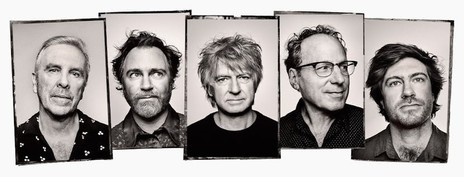
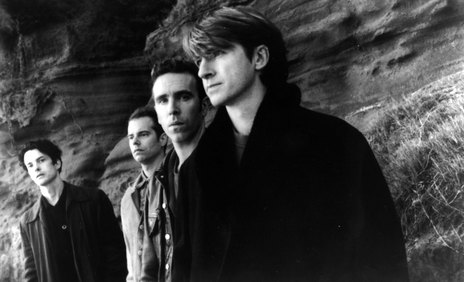
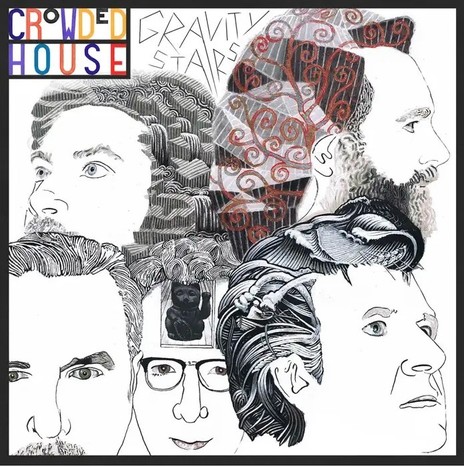
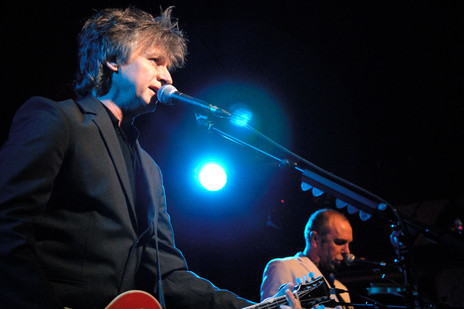
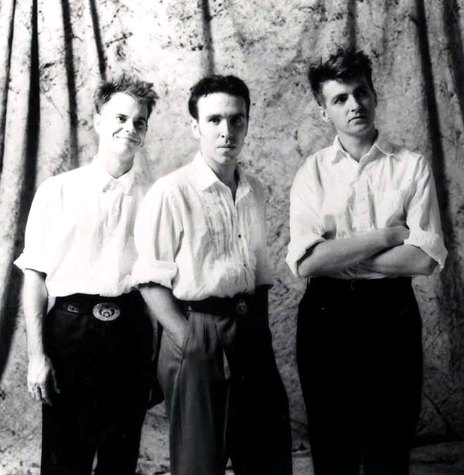
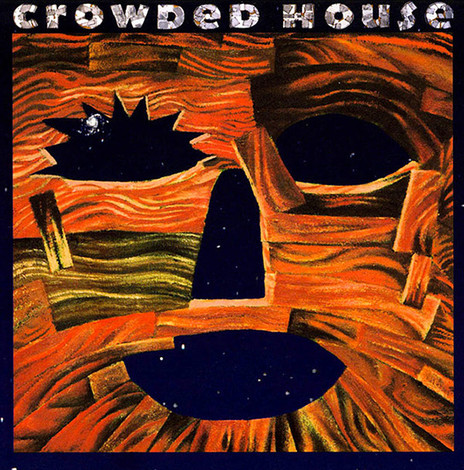
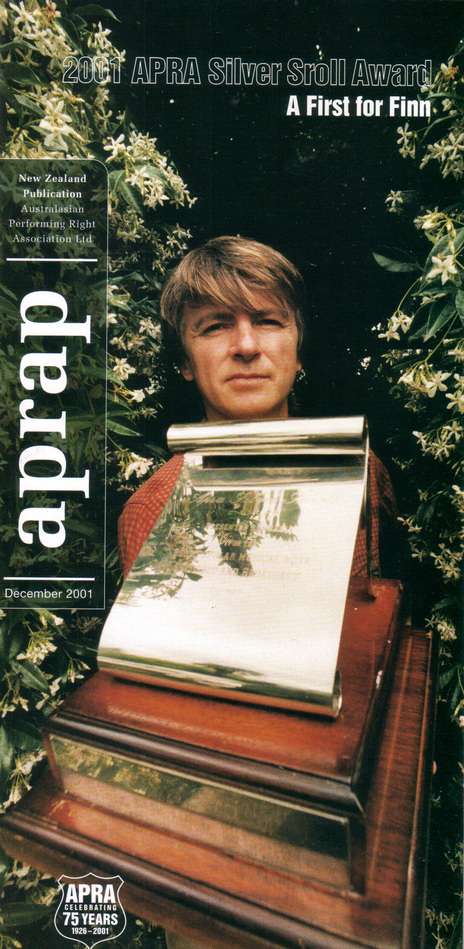
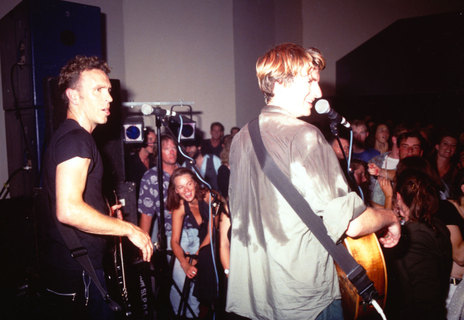
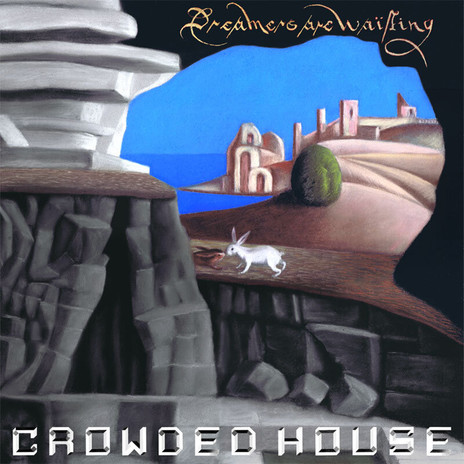
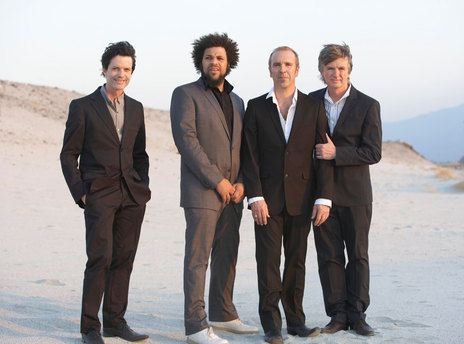
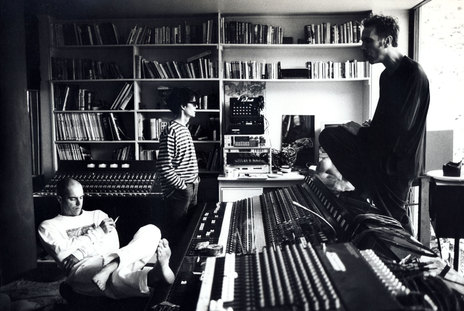
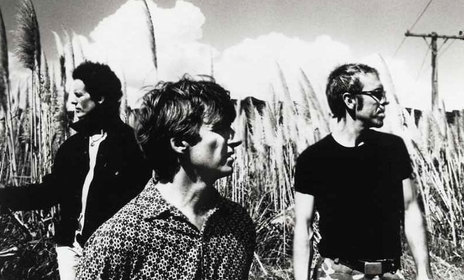

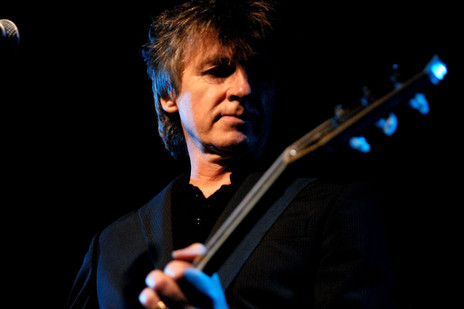
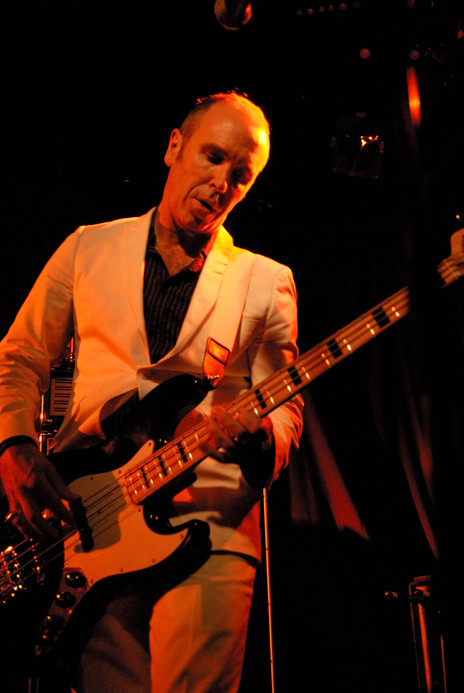
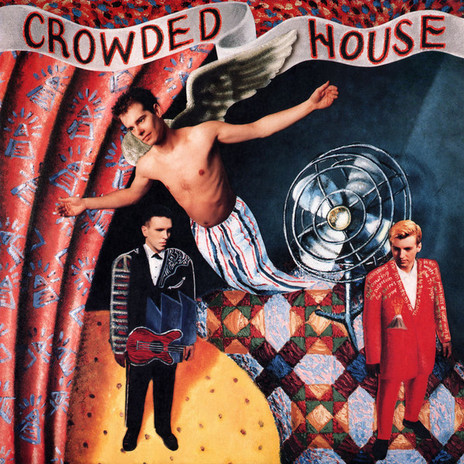
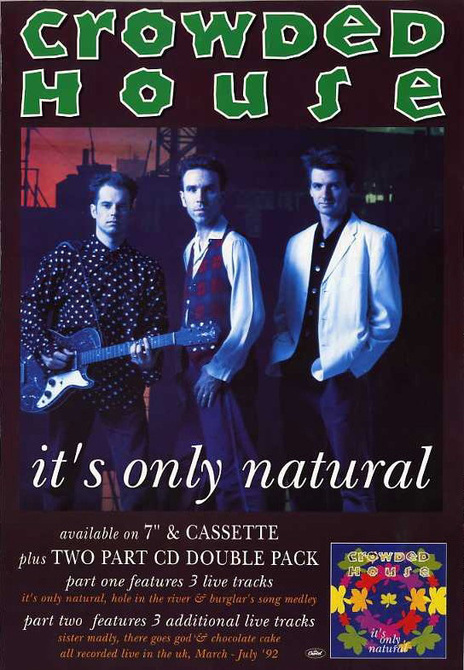
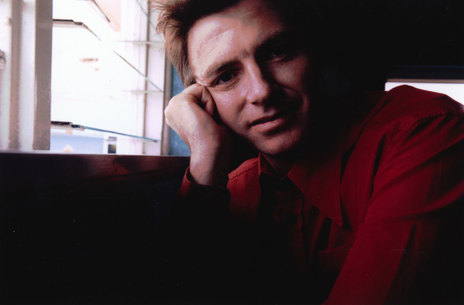
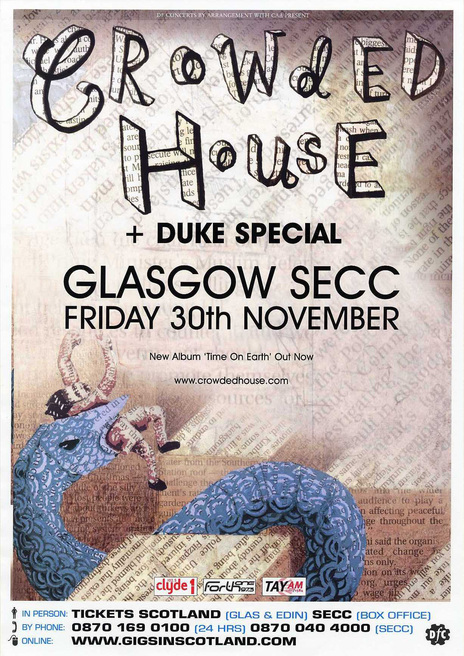
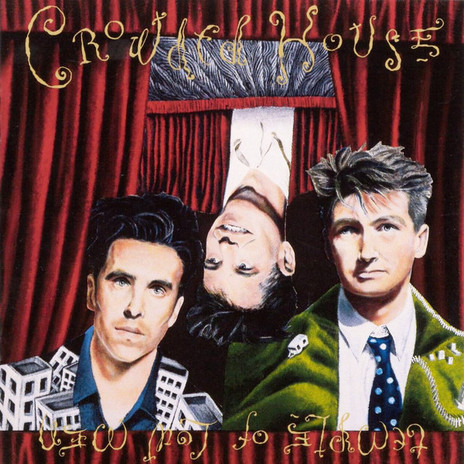
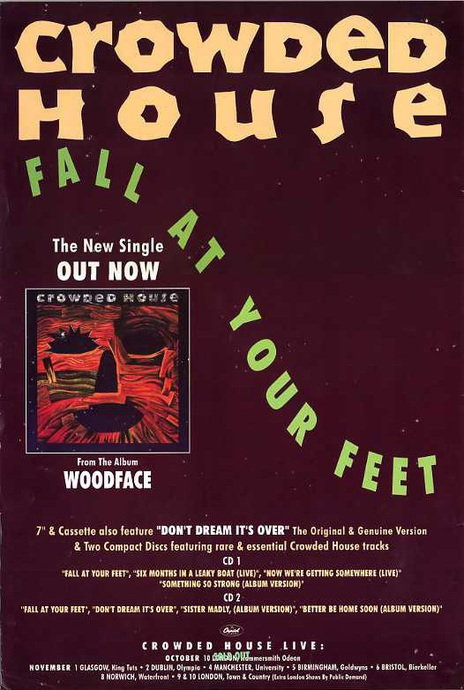
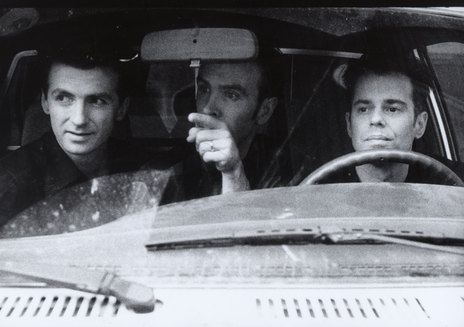
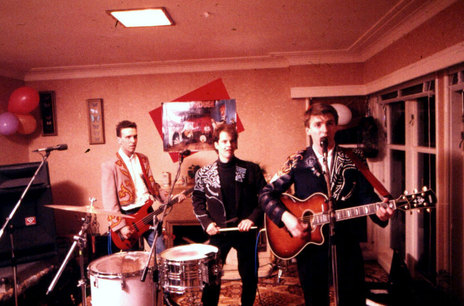
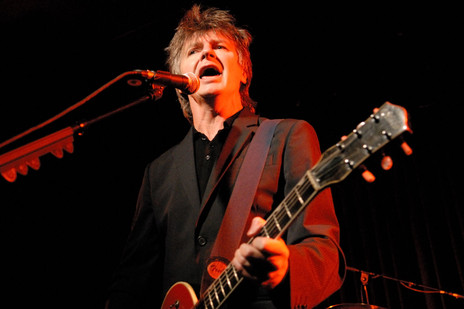
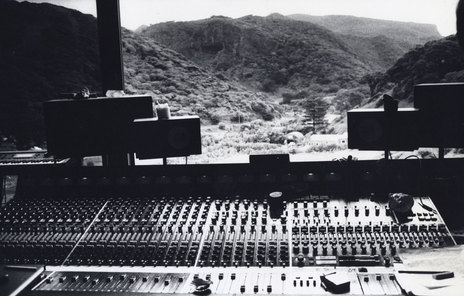
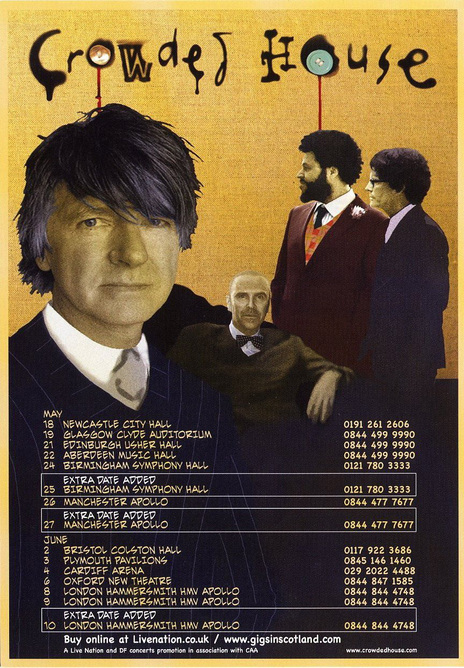
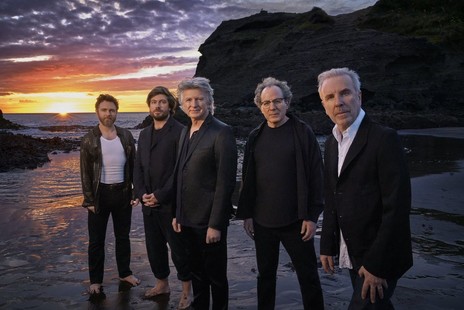
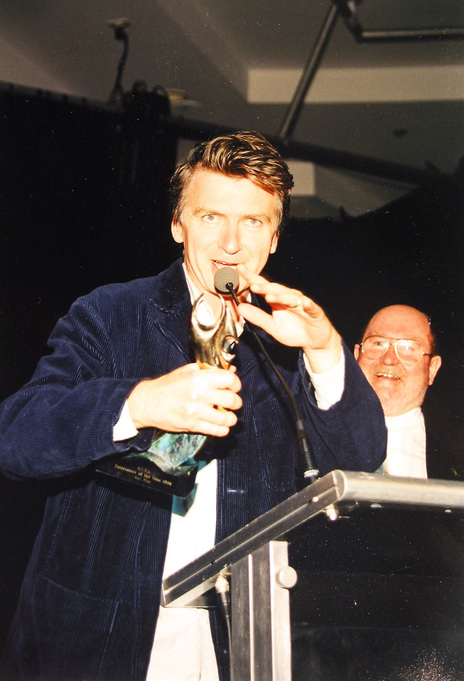
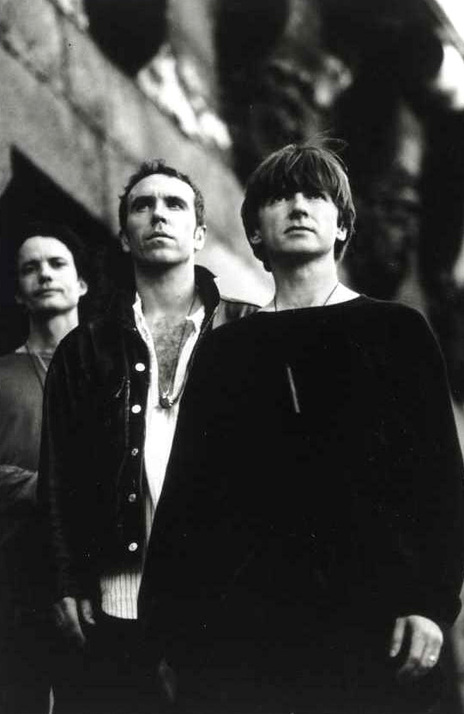
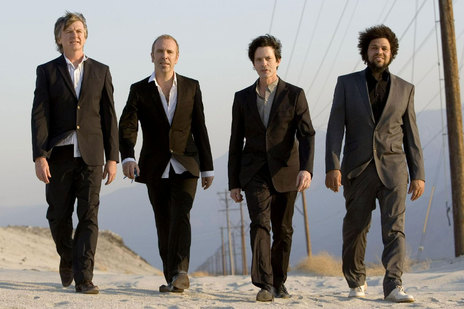
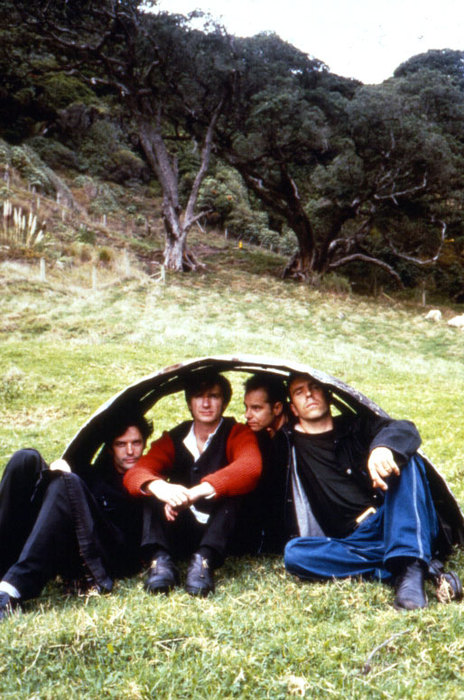
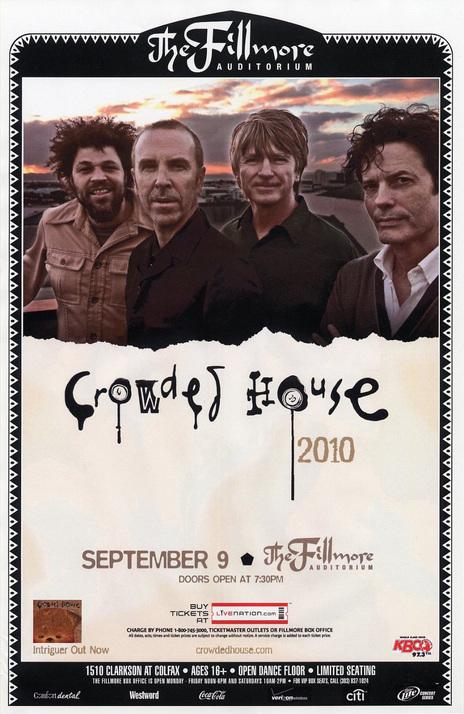
Capitol Records
Universal
Parlophone
Crowded House at Karekare, by Chris Bourke
Neil Finn interview by Chris Bourke, 1988
Grant Thomas interview, Rip It Up, 1997
Trouser Press on Crowded House
Neil Finn - guitar, vocals, piano
Paul Hester - drums
Nick Seymour - bass
Mark Hart - guitar, keyboards, vocals
Matt Sherrod
On their second appearance on The Tonight Show With Joan Rivers in April 1986, Crowded House serenaded fellow Antipodean guest Dame Edna Everage by singing 'Throw Your Arms Around Me' from the sofa.
Nick Seymour came with a strong musical pedigree. His older brother Mark was leader of Hunters & Collectors, a hard-hitting Australian rock band having an international impact. Prior to that, the brothers, two sisters and mother Paula comprised The Seymour Family Singers, a group that played Irish folk music around rural Victoria.
The expensive video clip for Chocolate Cake was filmed by Australian director John Hillcoat. He later gained notoriety by making such bleak hard-hitting films as Ghosts Of The Civil Dead, The Proposition and The Road. He has also directed videos for Depeche Mode, Nick Cave, and many more.
Visit our sister site
NZ On ScreenMade with funding from
NZ On Air